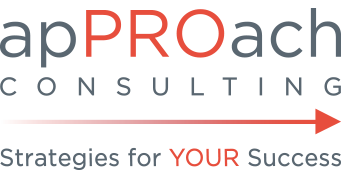Taking a project management approach to setting, measuring, and achieving personal goals.
I’m not sure if it’s because of my professional training or project management background, but some time ago, I started setting annual and quarterly goals for myself. I made a very important New Year’s resolution in 2009 and after that, I found myself wanting more. Not just another New Year’s resolution but a series of goals to take down month after month, year after year.
I find it much easier to set annual and quarterly goals than to make a three or five-year plan. The long-range planning doesn’t give me the flexibility I need to change course or re-prioritize as things change. For me, setting shorter-term goals that are measurable and attainable gets results. Those results motivate me to set more goals and continue on my goal-achieving journey. The most important thing to remember when setting goals is to make them SMART – Specific, Measurable, Attainable, Relevant, and Time-Bound.
It can be difficult to know where to start if you haven’t done detailed goals setting before. This isn’t just a New Year’s resolution (those are good too though). To begin, it’s helpful to break life apart into different categories.
The categories I use are family, friends, work, love, finances, travel, health, and home.
In “The Miracle Morning”, Hal Elrod outlines 10 areas to consider: Family & Friends, Personal Growth & Development, Spirituality, Finances, Career/Business, Significant Other/Romance, Fun & Recreation, Contribution/Giving, Health/Fitness, and Physical Environment.
Once you’ve settled on your categories, create a list of goals for each category. Don’t get carried away, try to keep your list under 3 or 4 items in each category. Here are a few examples:
- Work – do more networking, make time for professional development
- Finances – pay off student loan, save a 6-month emergency fund
- Travel – get out of the country, visit someplace warm
- Health – do more yoga, eat less meat
For right brain, creative souls you may find it more pleasing to create a mind map for your categories. If you’re not familiar with mind mapping, it is a creative and logical means of note-taking and note-making that literally “maps out” your ideas. I’m more of a left brain, but I do enjoy a good mind map! I create a mind map at the beginning of each year and then lay out my project plan for the year by quarter. With the eight categories I use, I typically end up with 20-25 goals that translate into a series of tasks that I schedule over the 12 months of that year. When you do the math, that’s very achievable and measurable. Take caution to be sure your goals are attainable. If one of your goals is to renovate your kitchen but you have no money and no DIY skills, I’d challenge the attainability of that specific goal.
Let’s use the ‘work’ goals I listed above as an example and break them into some specific tasks. We need to make sure they are specific, measurable, attainable, relevant, and time-bound.
Work – do more networking, make time for professional development.
Networking – attend 1 technology networking event each month, 1 women-only networking event, 1 business development networking event, schedule a one-on-one meeting with someone from my professional network – coffee or cocktails.
Professional Development – spend 1 hour a day, 5 days a week for 1 month finishing the Six Sigma Green Belt online lectures. Complete Green Belt exam.
I use smartsheet to create a detailed annual plan that incorporates all of the tasks and timelines. Here’s an example of what my networking goal would look like in smartsheet:

Once you’ve fleshed out your specific tasks for each goal in each category you have a comprehensive plan that will look something like this:

With a plan like this it can be incredibly rewarding to review at mid-year to see the progress you’ve made, where you may need to make revisions, and what comes next. Be generous with yourself, priorities change, and timelines may need to be extended. If you miss a deadline or target date, don’t scrap the whole thing, there’s still time! Give yourself permission to adjust your plan, this year isn’t over yet.
If you didn’t start this year with a plan, it’s not too late! If you’ve never done a detailed project plan before you could start with a 3-month plan and see where that takes you. One ‘A’ that is important – but not the A in SMART, is accountability. Consider how you are going to hold yourself accountable for meeting your goals. Can you do that on your own or recruit a friend or family member to help encourage you along the way? Many people find success using social media as an accountability tool. If you post that you’re signing up for a course or taking a test, will you feel more inclined to follow through because you let the world know you’re doing it? Money can be an accountability tool for some. If you pay for a gym membership you may be more inclined to work out than if you simply committed to working out at home three days a week. If you need help with planning or accountability, consult an expert! If you have a long to-do list or you’re feeling inspired, get started now, there’s plenty of time to knock those goals out!
